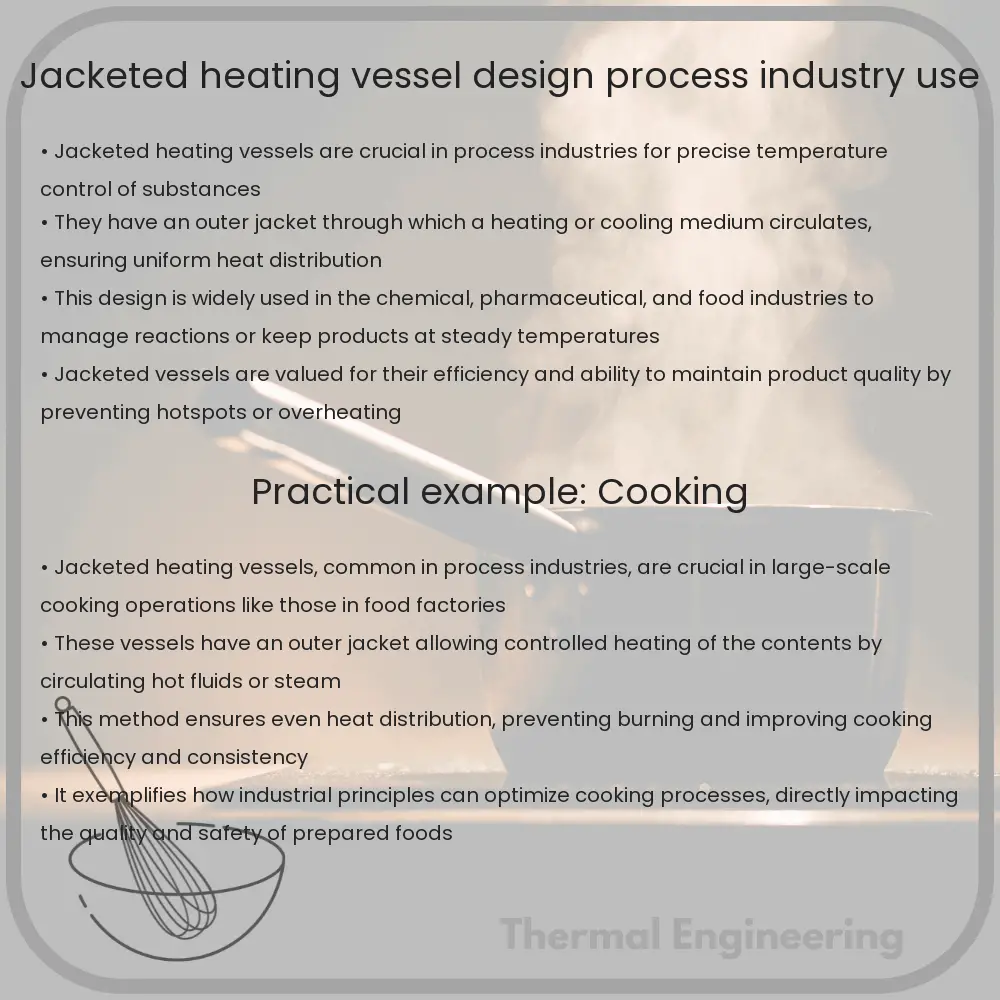Learn about jacketed heating vessels, essential for precise temperature control in industries like pharmaceuticals, chemicals, and food processing.

Jacketed Heating Vessel: An Overview
Jacketed heating vessels are a crucial component used in various sectors of the process industry such as pharmaceuticals, chemical manufacturing, and the food and beverage sector. These vessels are designed to control the temperature of the contents being processed, allowing for precise control necessary for complex chemical reactions and processing tasks.
Design Principles of Jacketed Heating Vessels
The design of a jacketed heating vessel focuses on thermal efficiency, compliance with safety regulations, and durability. The basic structure consists of an outer jacket that covers the main container. Between the main vessel and the jacket, there is an annular space through which heating or cooling media can flow. This design allows for uniform heating or cooling of the vessel’s contents.
- Materials: The choice of material is crucial for both the inner vessel and the jacket. Commonly used materials include stainless steel and glass-lined steel, chosen for their ability to withstand corrosive contents and high temperatures.
- Heating Medium: The medium flowing in the jacket can be steam, hot water, or oil, chosen based on the required temperature and the nature of the process.
- Insulation: To improve thermal efficiency and safety, the outer surface of the jacket is often insulated with materials that reduce heat loss and protect personnel.
- Agitation: Many jacketed vessels are equipped with agitators. These can be impellers, paddles, or other types designed to mix the contents thoroughly, ensuring uniform heat distribution.
Thermal Considerations
Understanding the heat transfer in a jacketed vessel is crucial for its design and operation. The basic equation governing the heat transfer rate in a jacket system is given by:
Q = U * A * ΔT
where:
- Q is the total heat transfer rate,
- U is the overall heat transfer coefficient,
- A is the heat transfer area,
- ΔT is the temperature difference between the jacket’s inlet fluid and the vessel contents.
The overall heat transfer coefficient, U, is influenced by the conductivity of the materials, the fluid velocities, and the fouling factors during the process.
Applications in the Process Industry
Jacketed vessels are integral to the process industry, considering their ability to provide precise temperature control. Here are a few applications:
- Chemical Reactions: Many chemical reactions require heat input or need to be conducted at controlled temperatures to ensure yield and safety.
- Pharmaceuticals: In the manufacture of drugs, precise temperature control can be crucial for the effectiveness and stability of the product.
- Food and Beverage: Cooking, pasteurization, and sterilization often use jacketed vessels to process large volumes under controlled conditions to ensure product safety and consistency.
Conclusion
Jacketed heating vessels are vital tools in the arsenal of many industries requiring precise temperature management. Whether it’s synthesizing complex chemicals, brewing beer, or manufacturing medications, these vessels support a controlled, efficient, and safe production process. As technology and materials science advance, the design and capabilities of jacketed vessels will continue to evolve, further enhancing their role in the industrial sector.